Do you have a question about the Whynter BR-130SB and is the answer not in the manual?
Basic precautions to reduce the risk of fire, electrical shock, or injury.
General safety warnings for operation, installation, and usage.
Identification of the main components of the beverage refrigerator.
Details on the beverage storage capacity in standard cans.
Specifications like model, voltage, current, power, dimensions, and refrigerant.
Safety precautions specific to the installation process.
Step-by-step guide for setting up the appliance.
Guidance on selecting an appropriate location for the appliance.
Instructions for installing the appliance as a freestanding unit.
Guidelines for connecting the appliance to a power source.
Recommendations and requirements for using an extension cord.
Steps to attach the decorative door handles.
How to adjust the internal temperature using the control dial.
Instructions for turning the internal LED light on and off.
Information about the fan for even temperature distribution.
Procedure to change the direction the door opens.
Steps to ensure the appliance is stable and level.
Guidance on how to defrost the unit if frost builds up.
Explanation of typical operating noises produced by the appliance.
Steps for preparing the unit for long-term storage or moving.
Instructions for cleaning the interior and exterior of the unit.
Recommendations for leaving the appliance during short or long vacations.
Tips for safely moving the beverage refrigerator.
Advice on operating the appliance efficiently to save energy.
Addresses issues where the appliance fails to turn on.
Solutions for when the unit does not cool properly.
Explains potential causes for frequent cycling of the appliance.
Discusses common and abnormal noises and their solutions.
Troubleshooting steps for doors that do not seal or close correctly.
Explains why condensation forms and how to reduce it.
Addresses issues related to excessive frosting inside the unit.
Lists exclusions from the limited warranty coverage.
Explains limitations on implied warranties and remedies.
Basic precautions to reduce the risk of fire, electrical shock, or injury.
General safety warnings for operation, installation, and usage.
Identification of the main components of the beverage refrigerator.
Details on the beverage storage capacity in standard cans.
Specifications like model, voltage, current, power, dimensions, and refrigerant.
Safety precautions specific to the installation process.
Step-by-step guide for setting up the appliance.
Guidance on selecting an appropriate location for the appliance.
Instructions for installing the appliance as a freestanding unit.
Guidelines for connecting the appliance to a power source.
Recommendations and requirements for using an extension cord.
Steps to attach the decorative door handles.
How to adjust the internal temperature using the control dial.
Instructions for turning the internal LED light on and off.
Information about the fan for even temperature distribution.
Procedure to change the direction the door opens.
Steps to ensure the appliance is stable and level.
Guidance on how to defrost the unit if frost builds up.
Explanation of typical operating noises produced by the appliance.
Steps for preparing the unit for long-term storage or moving.
Instructions for cleaning the interior and exterior of the unit.
Recommendations for leaving the appliance during short or long vacations.
Tips for safely moving the beverage refrigerator.
Advice on operating the appliance efficiently to save energy.
Addresses issues where the appliance fails to turn on.
Solutions for when the unit does not cool properly.
Explains potential causes for frequent cycling of the appliance.
Discusses common and abnormal noises and their solutions.
Troubleshooting steps for doors that do not seal or close correctly.
Explains why condensation forms and how to reduce it.
Addresses issues related to excessive frosting inside the unit.
Lists exclusions from the limited warranty coverage.
Explains limitations on implied warranties and remedies.
| Type | freestanding |
|---|---|
| Style | compact |
| Color | stainless steel, stainless-steel/black |
| Number of Doors | 1 |
| Total Capacity | 3.4 cubic feet |
| Refrigerator Capacity | 3.4 cubic feet |
| Defrost System | manual |
| Number of Refrigerator Shelves | 5 |
| Temperature Control | electromechanical |
| Ice Maker | no |
| Smart Home | no |
| Annual Energy Consumption | 350 kilowatt hours |
| Voltage | 115 volts |
| Current | 1.3 amperes |
| Depth | 18.5 inches |
|---|---|
| Height | 33 inches |
| Width | 17 inches |
| Net Weight | 57 pounds |
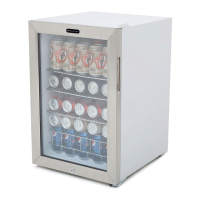
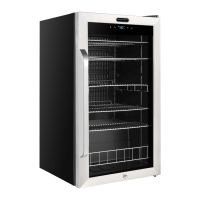
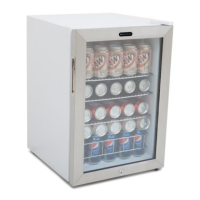
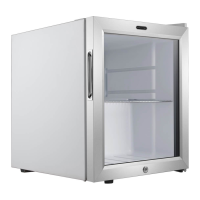
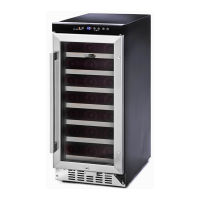
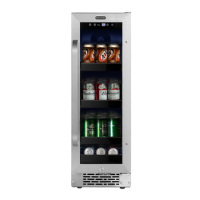
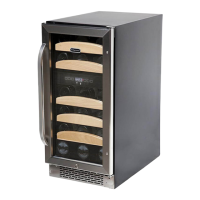
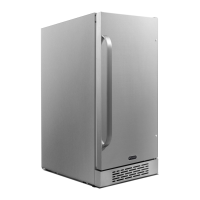
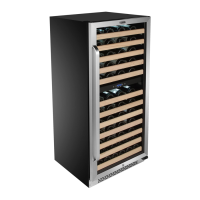
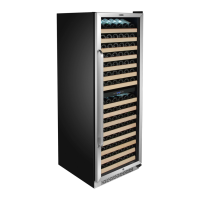
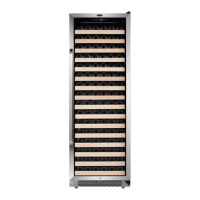
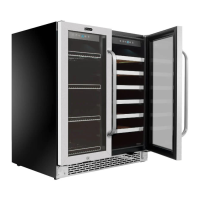
